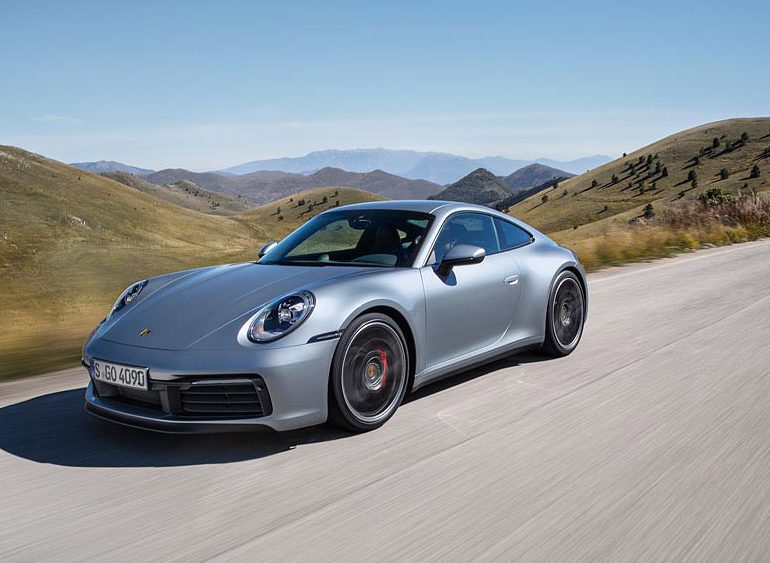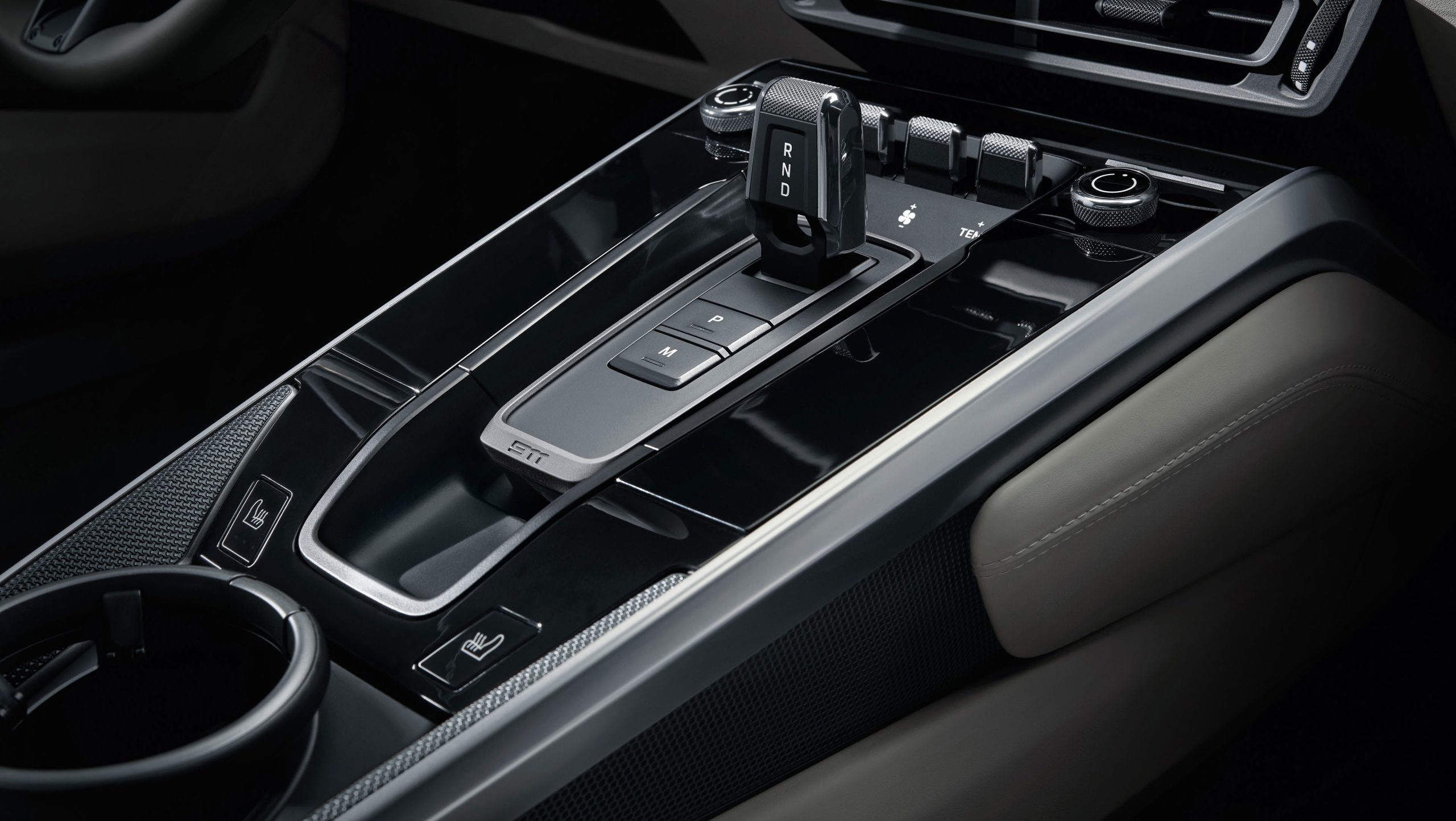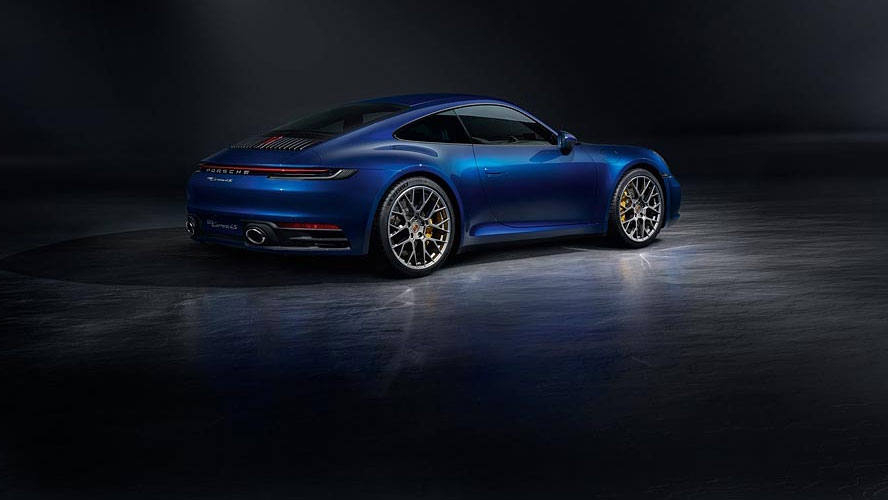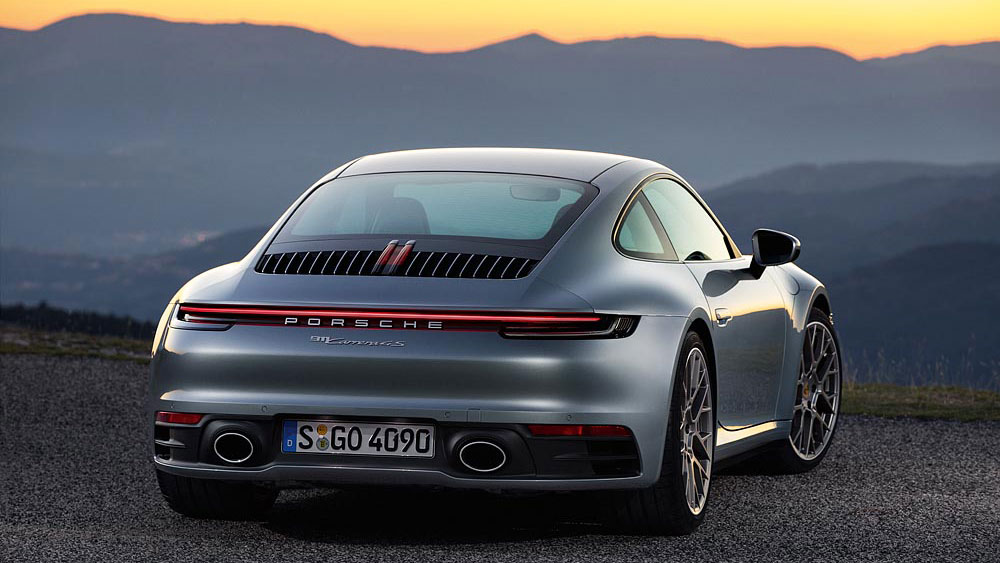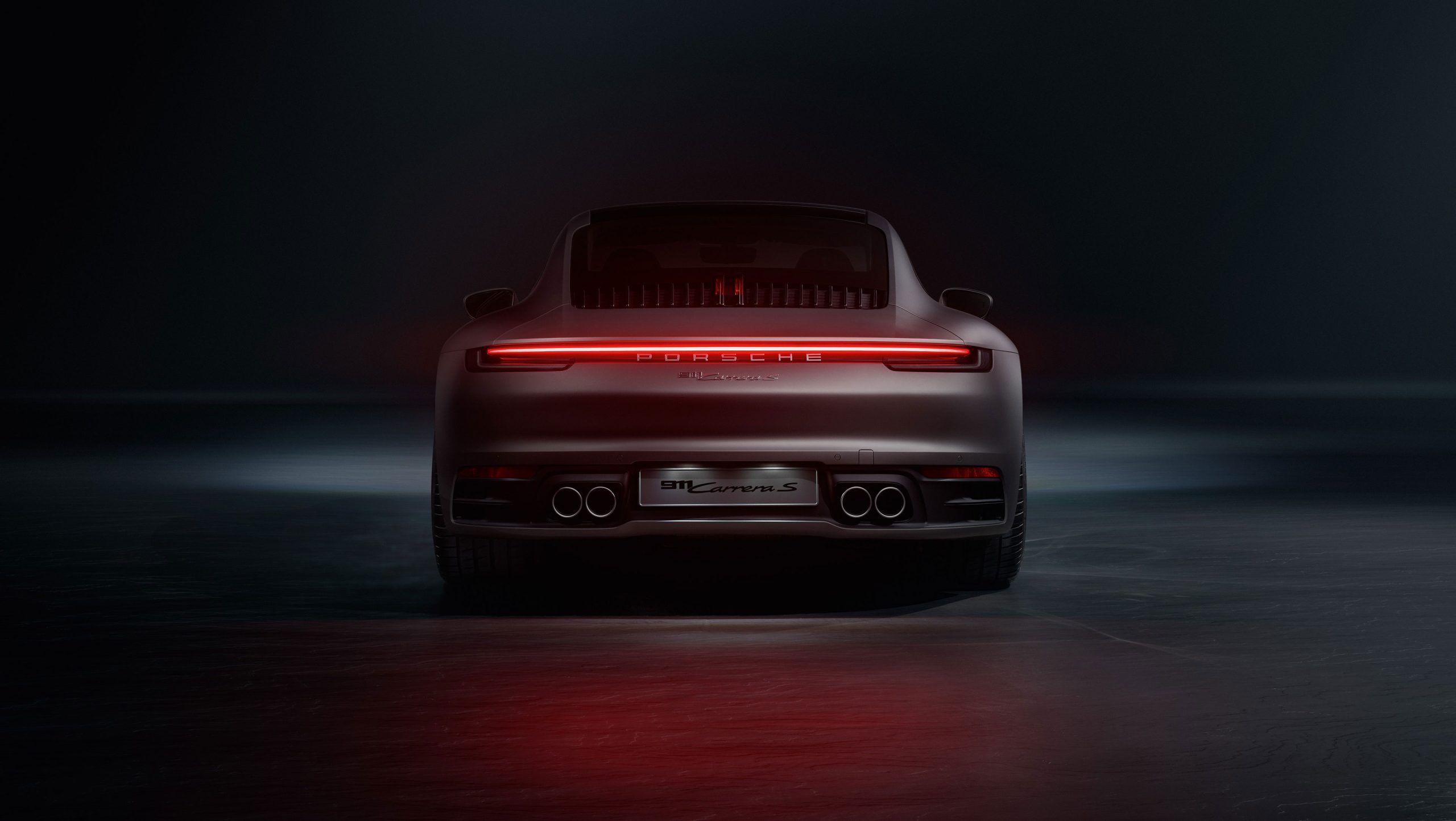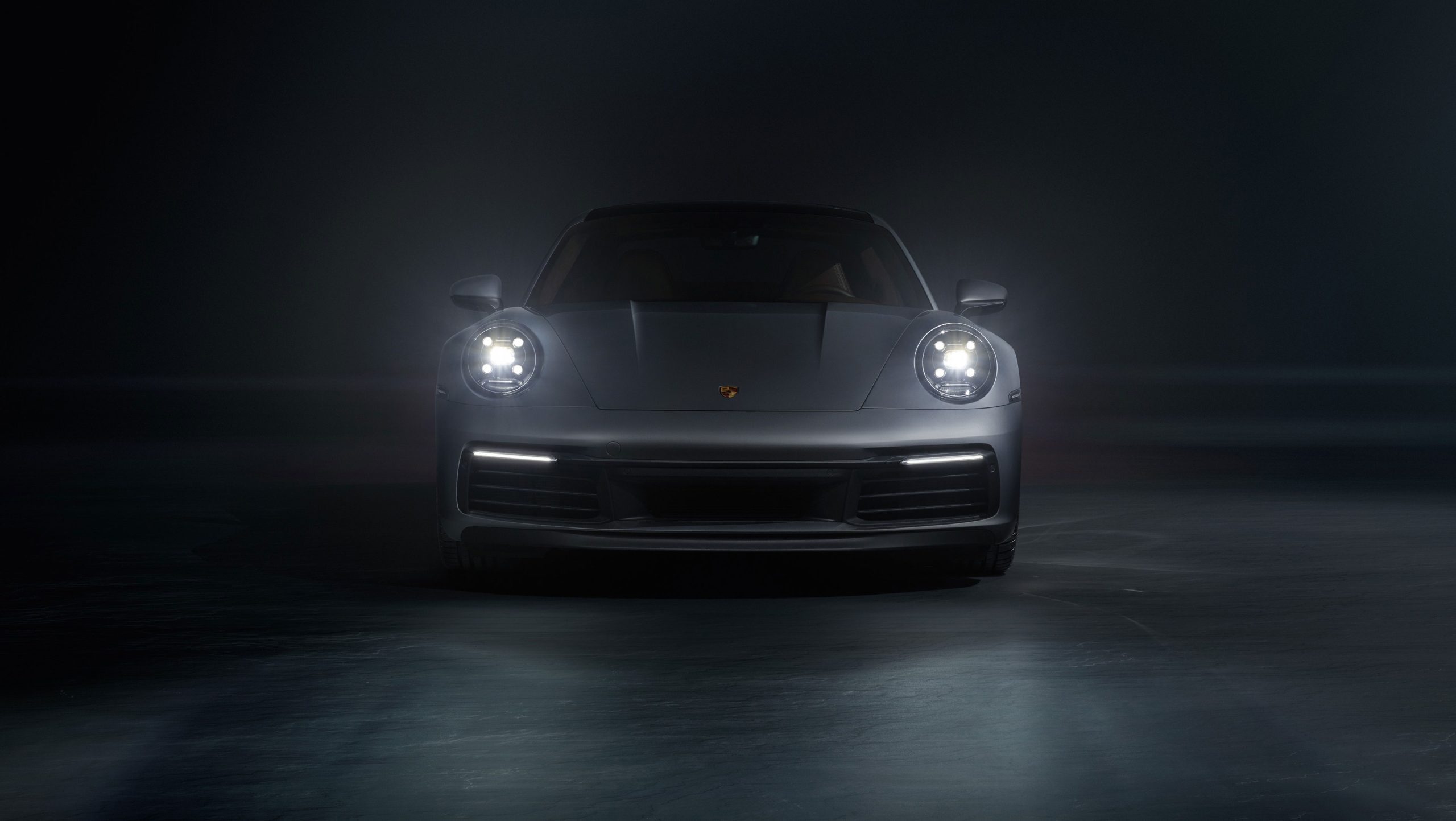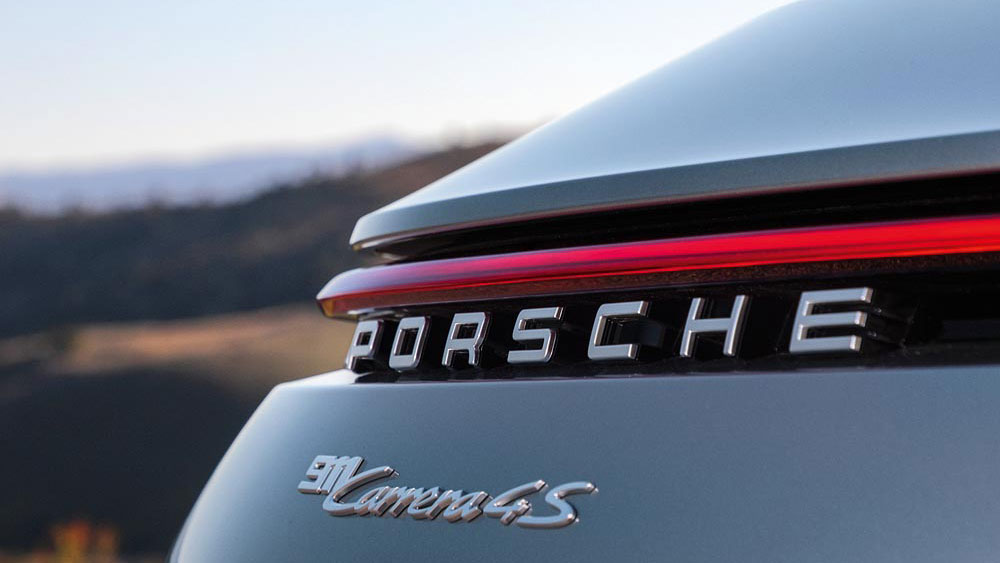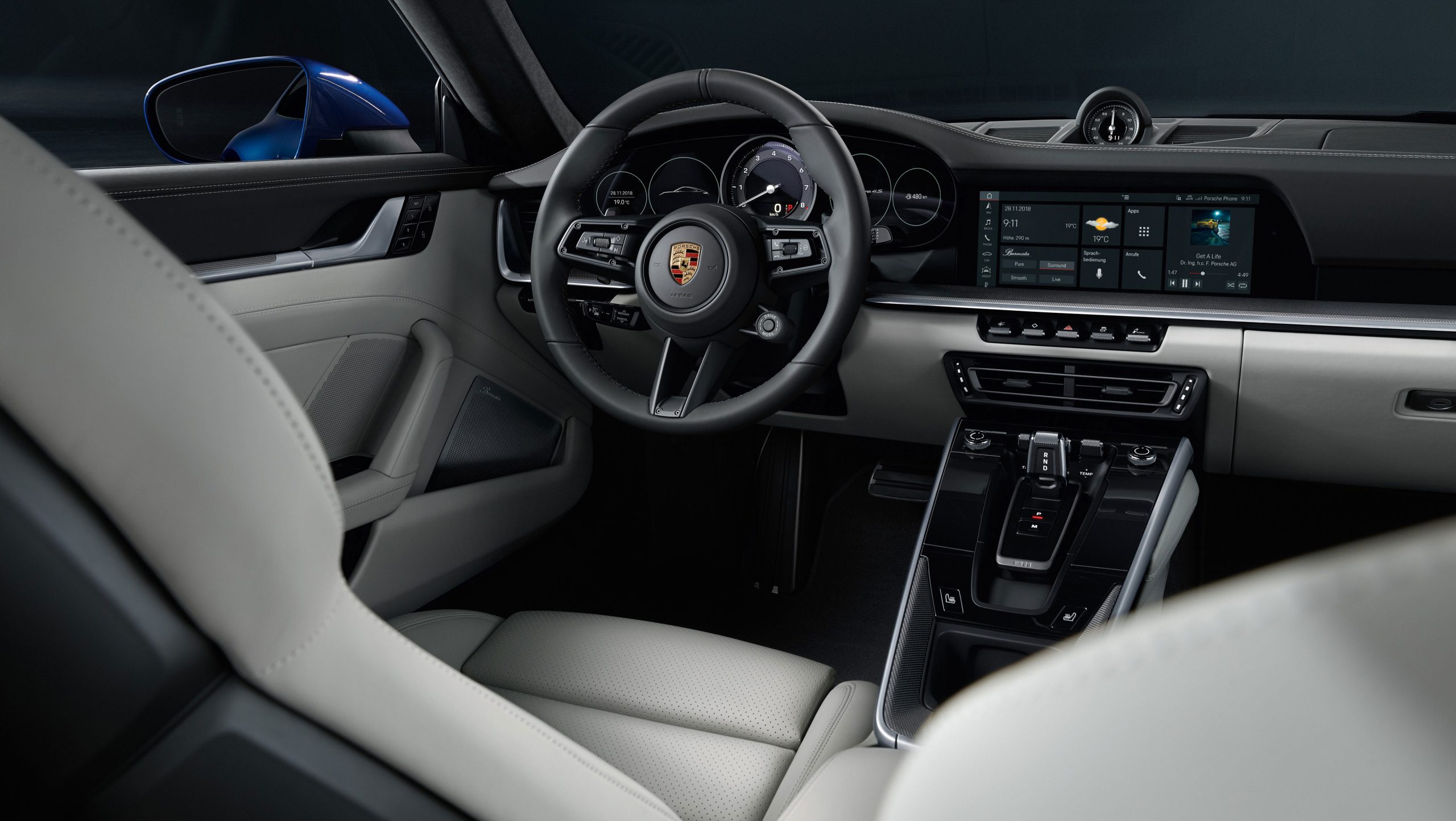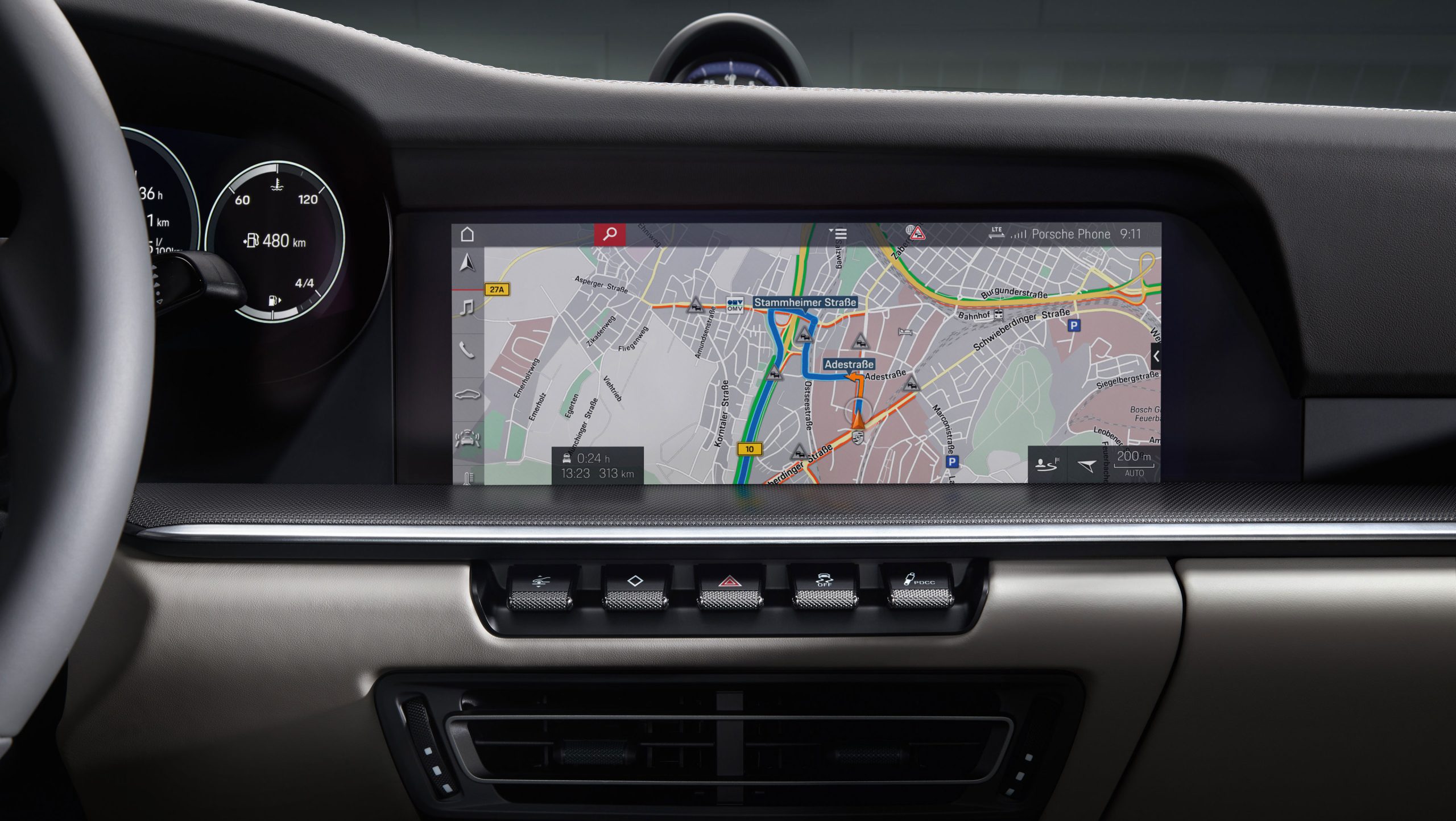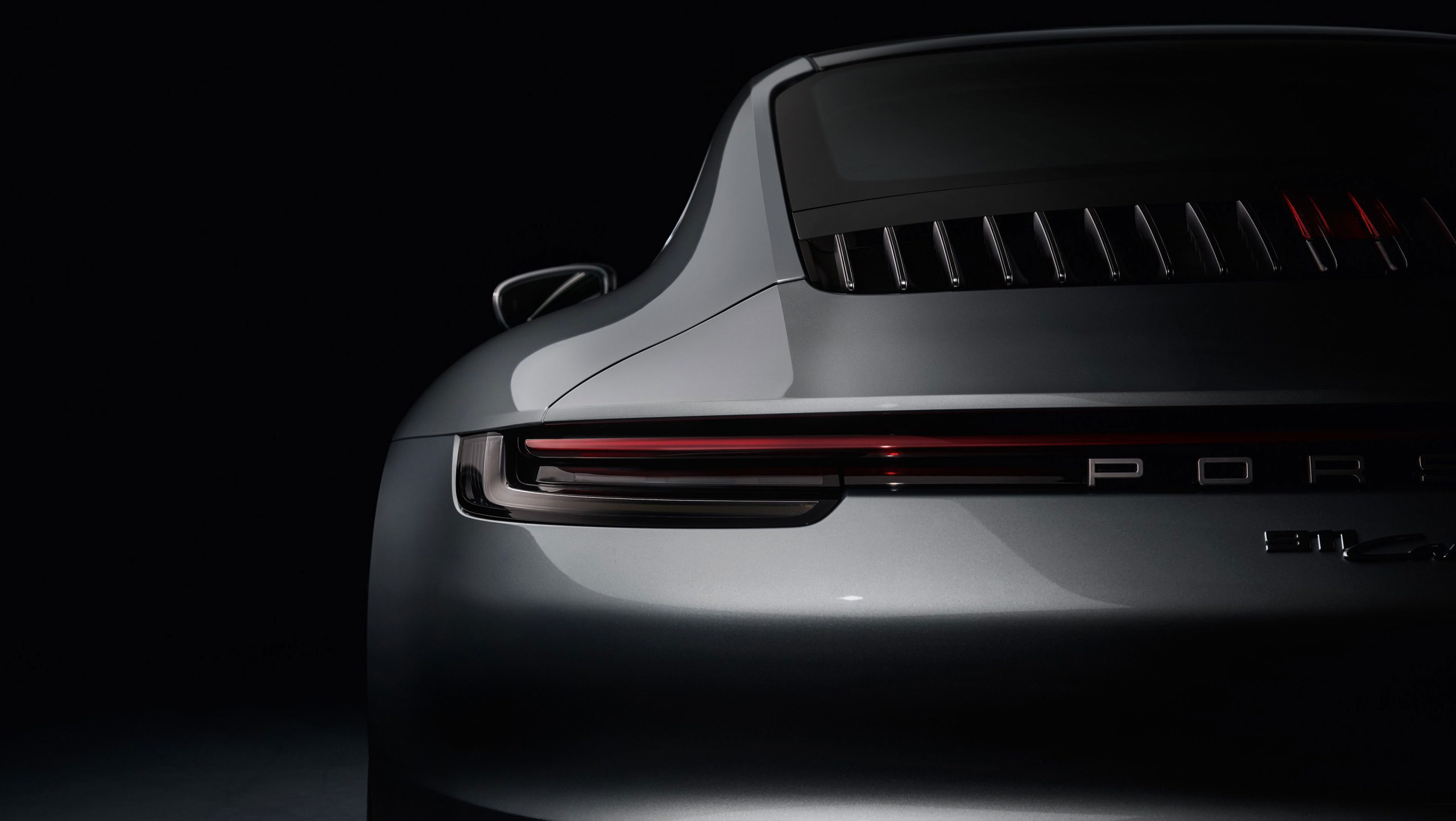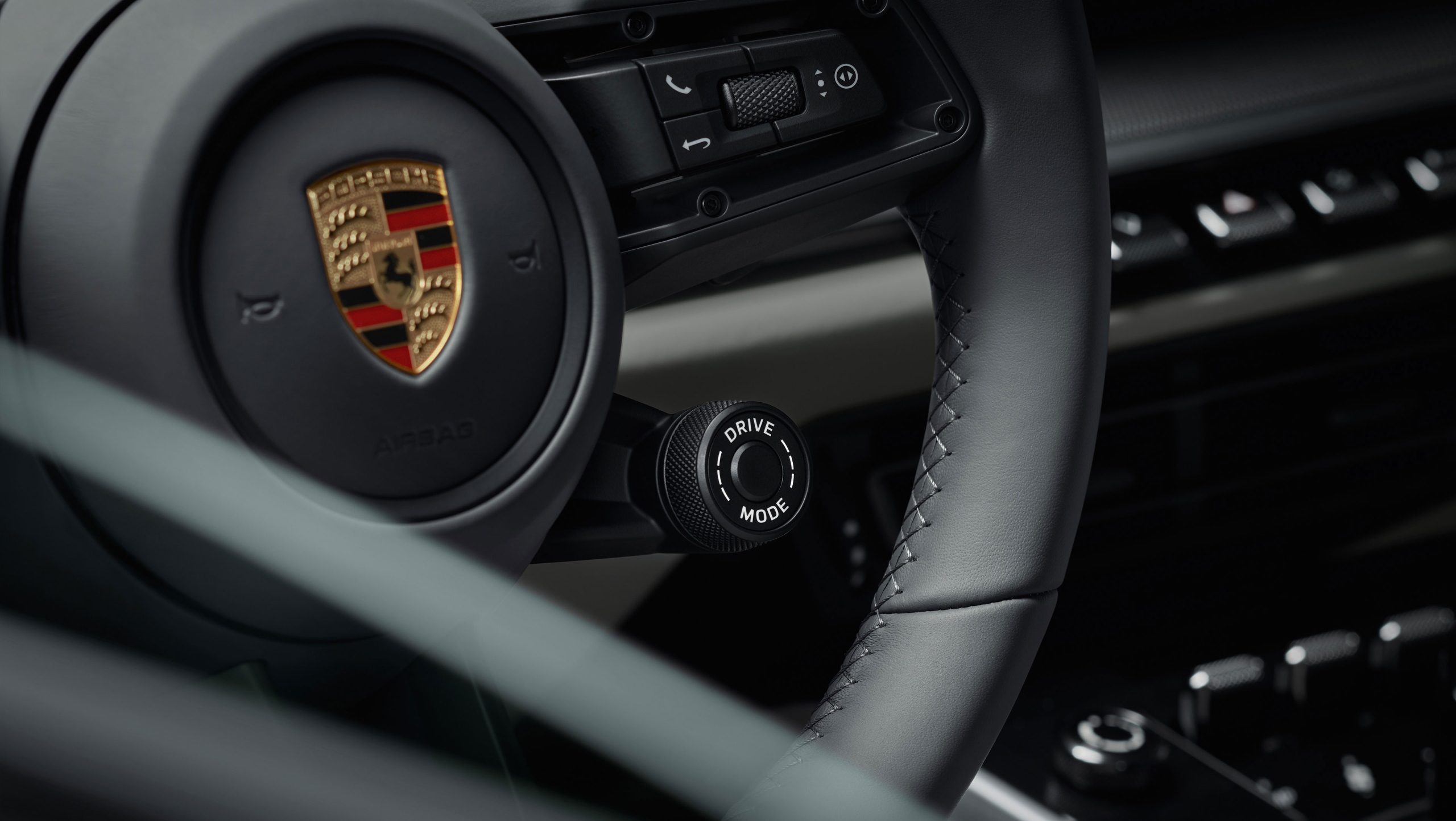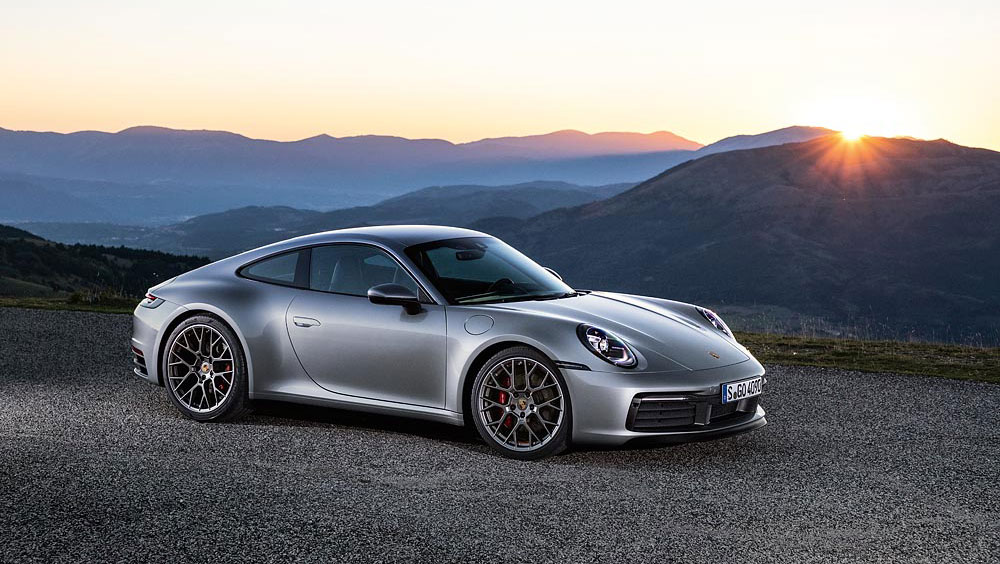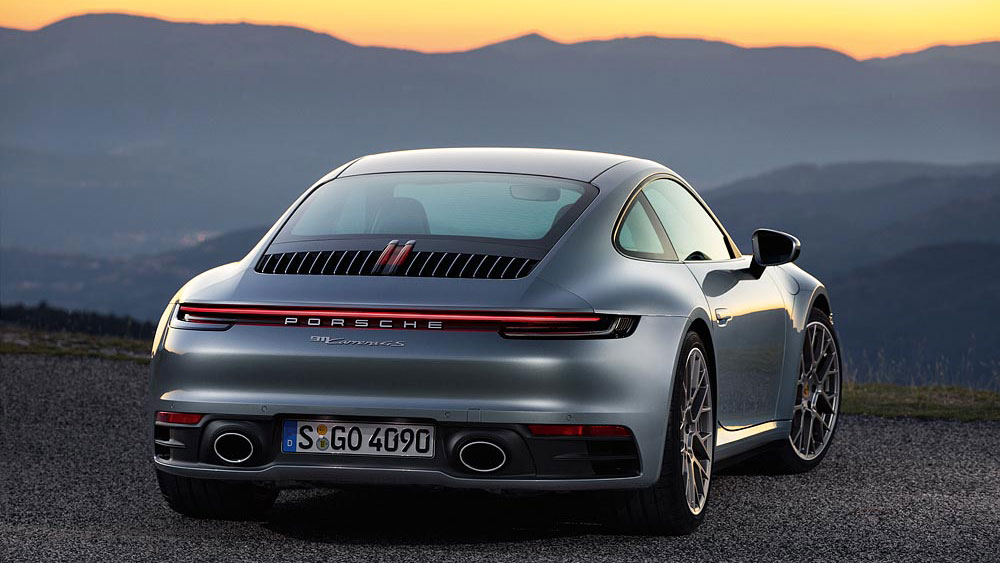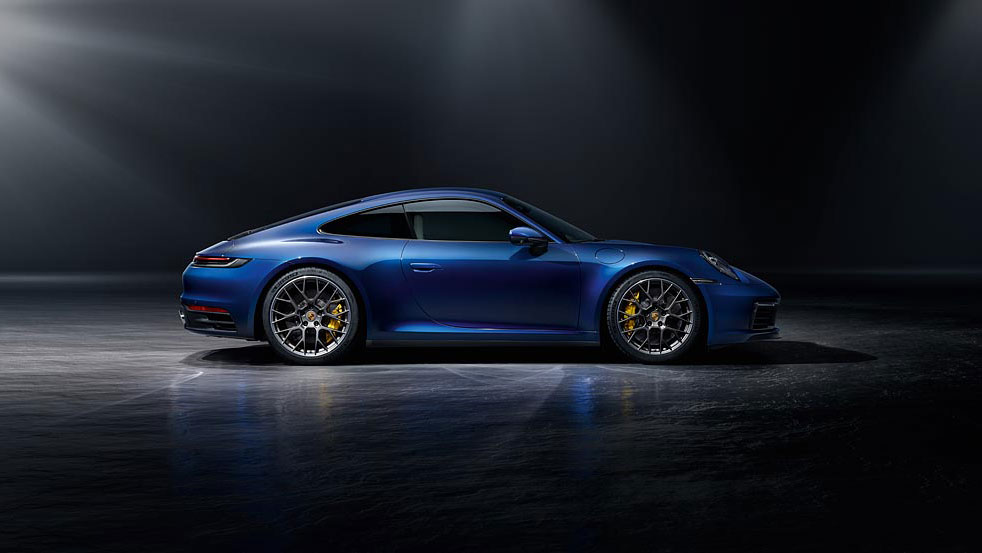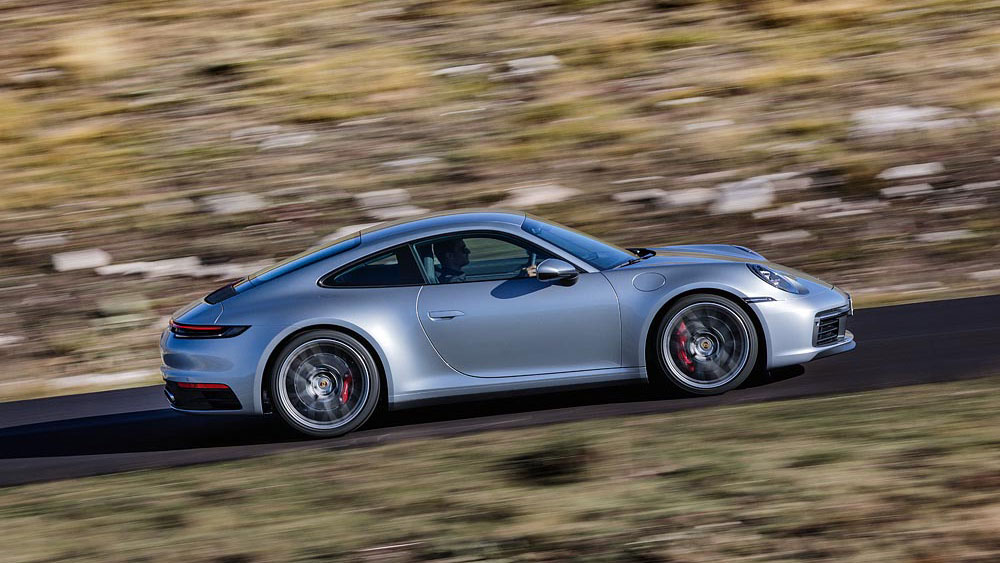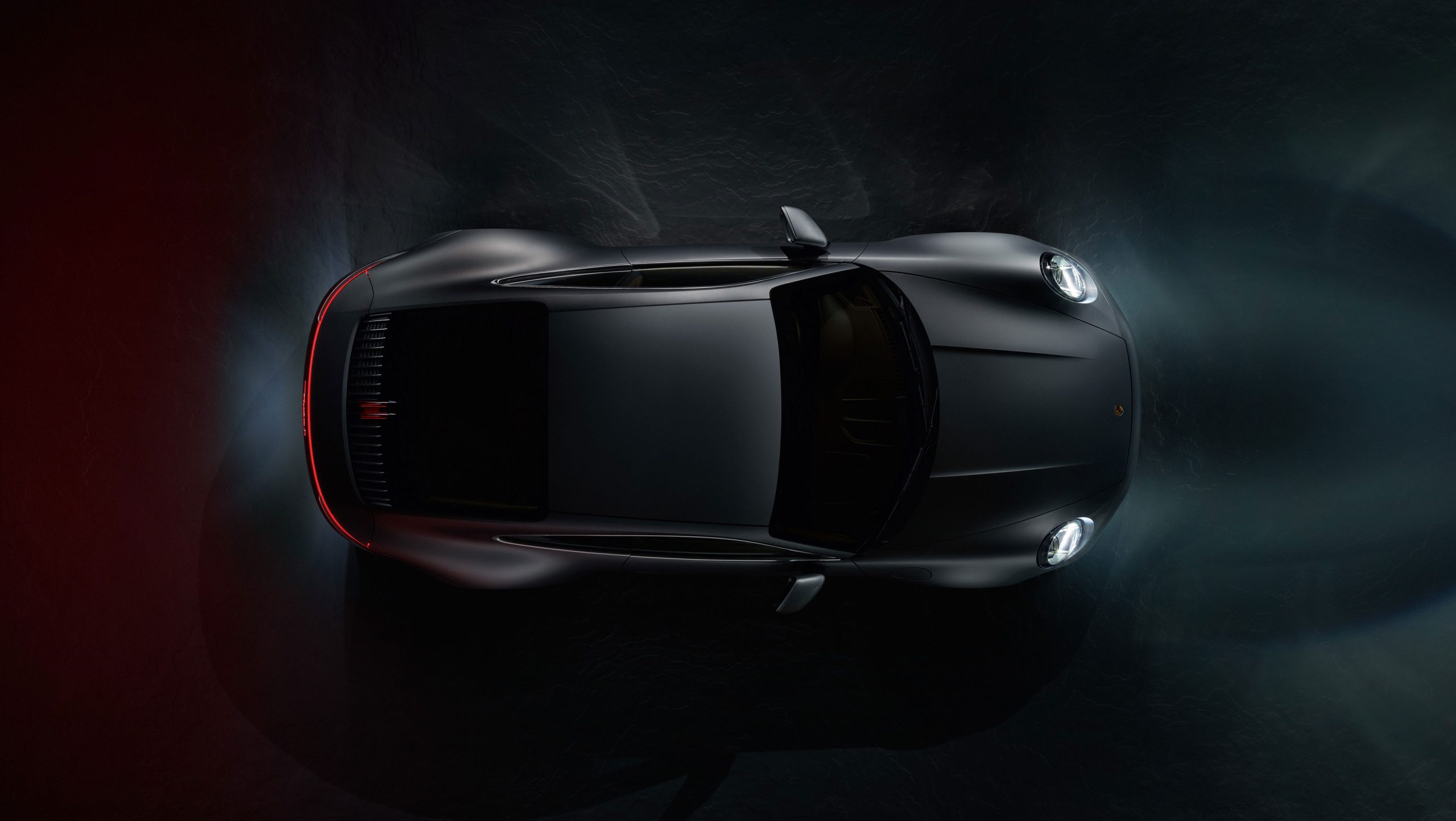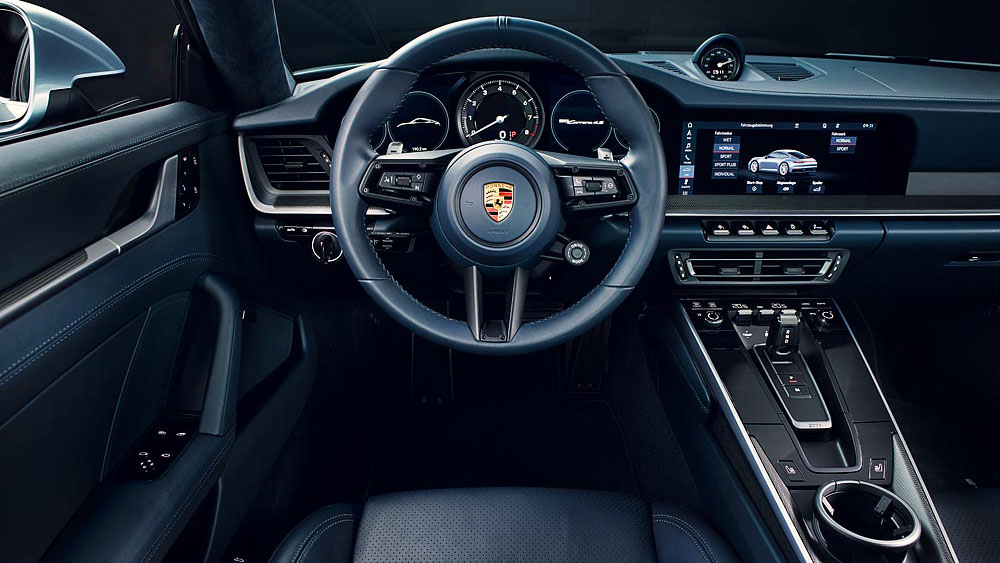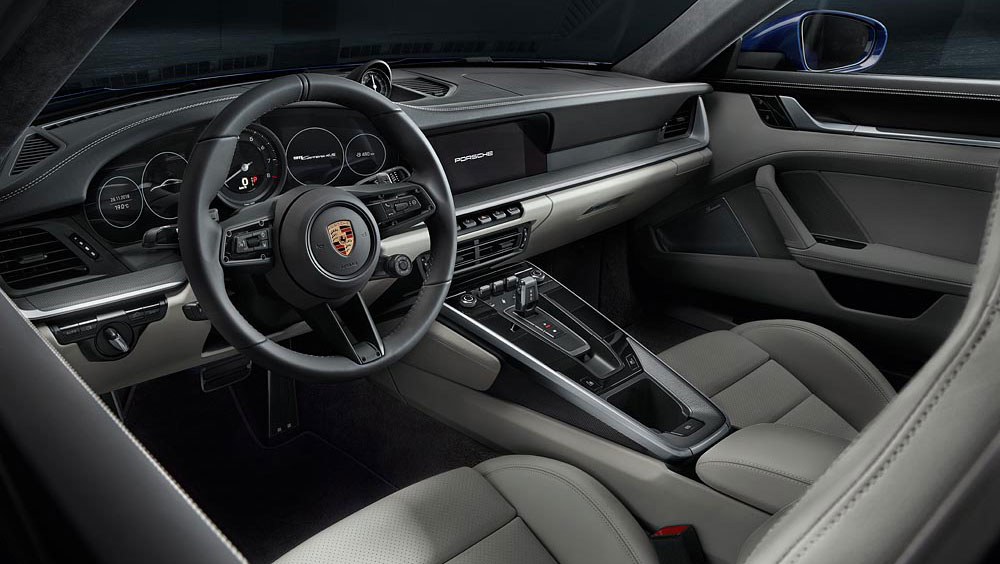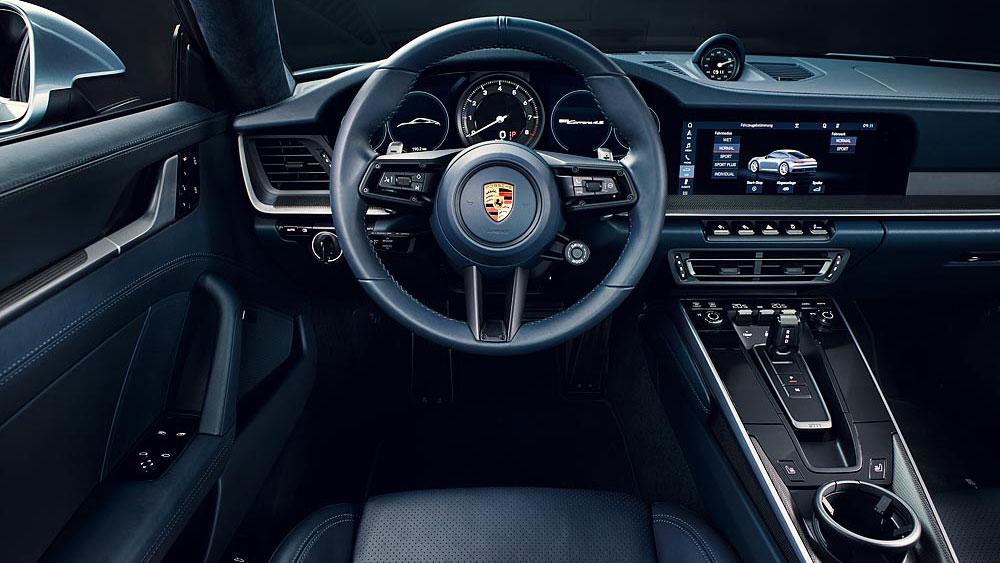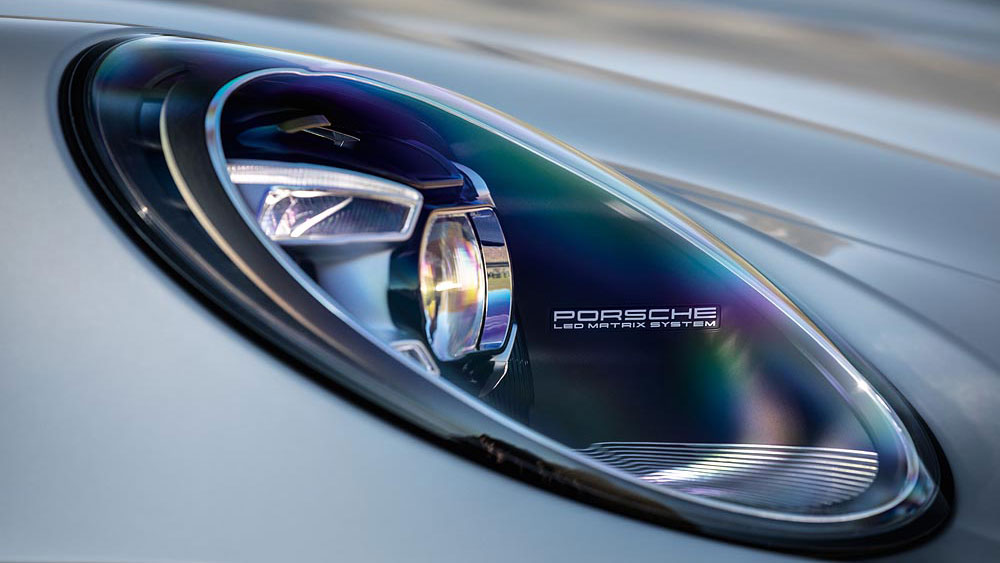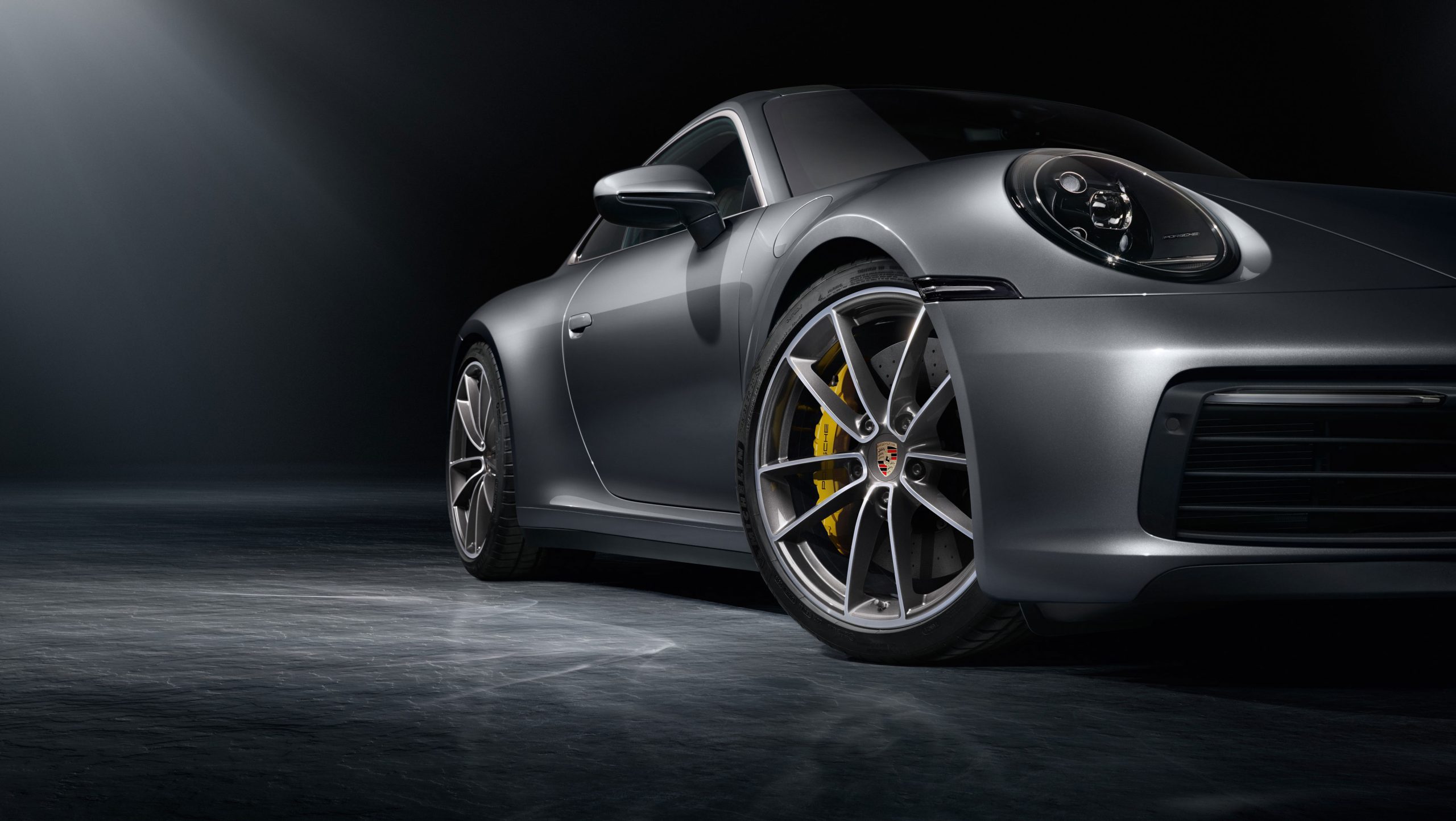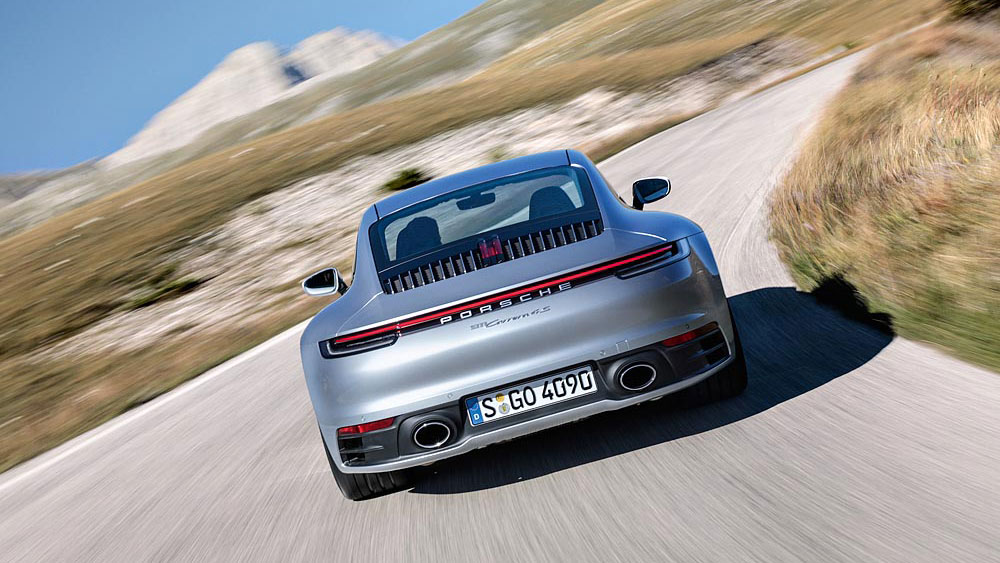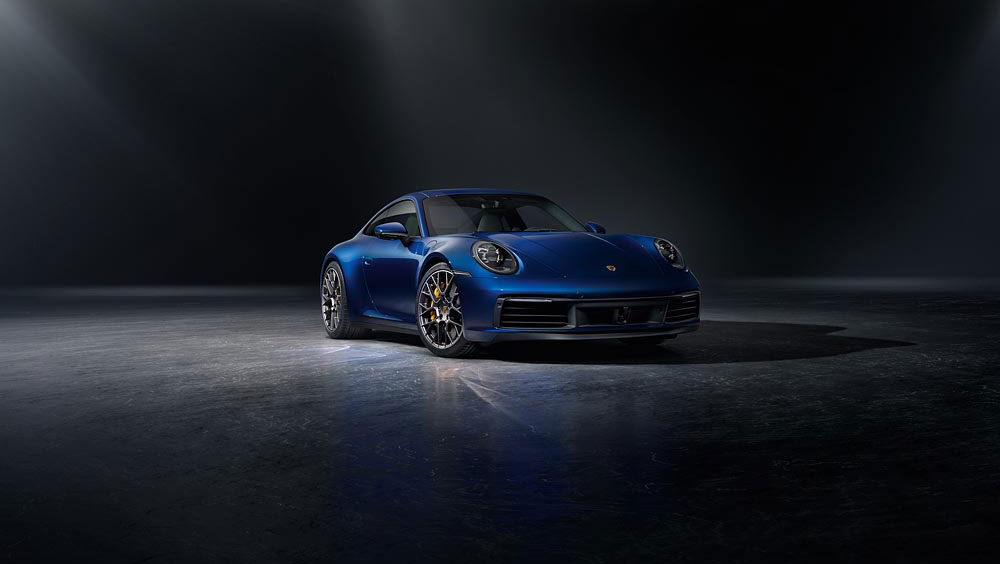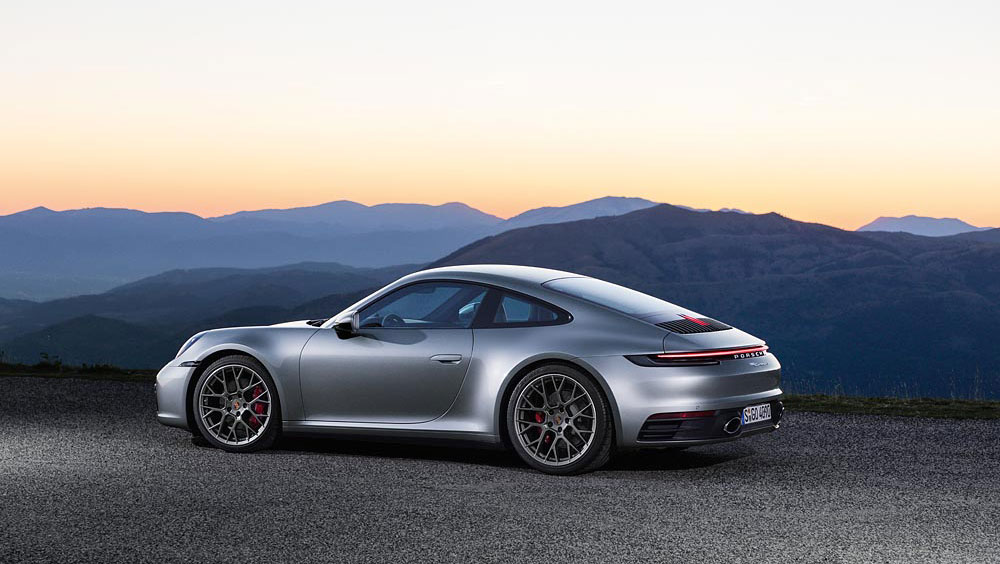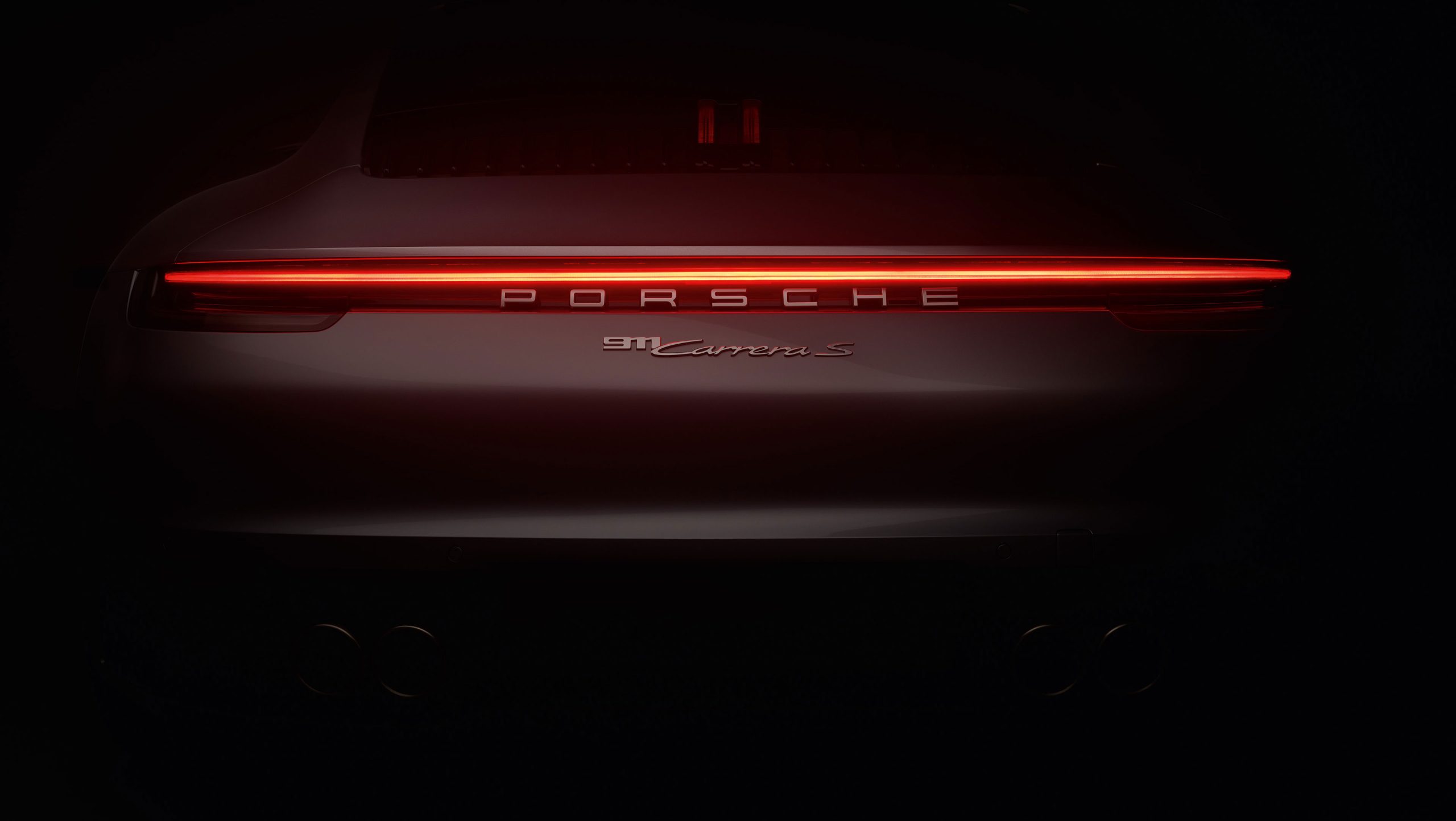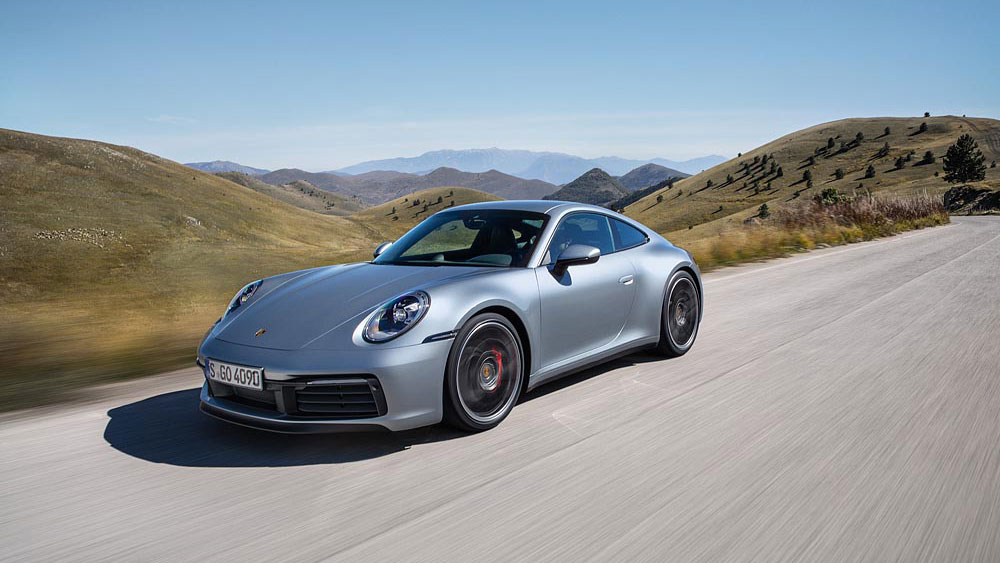2020 Porsche 911 Carrera S (992)
The new Porsche 911: more powerful, faster, digital
The German automaker has unwrapped its powerful new 911 on the eve of the Los Angeles motor show, offering folks a first real look at the eighth generation of one of the motoring world’s most recognizable rear-engined icons. It is the eighth generation 911, codenamed the 992 (see all historical models here). This is a big deal, it isn’t often we get a new 911 so when we do we like to obsess.
The basic structure and footprint of the 991 Porsche was carried over for the 992, but the new Porsche wears updated bodywork that (as expected) evolves the 911 shape rather that do anything too rash. Save for the front and rear fascias, the body is made entirely from aluminum, too. It looks more planted to me, a more muscular look and better stance than the outgoing 991. It has wider arches covering 20-inch wheels up front and 21-inch wheels down back, while the front end has been stretched out by 45 mm (1.77 in) to give it that slightly wider stance. All 911s will now have this wider body (previously it was only the all-wheel drive models). On the outside, we also love the cool electrical pop-out flush doorhandles which mean the side is completely flat as well as the rear end which is modern and old school at the same time.
The new cars have the same twin-turbo 3.0-liter used in current Carrera models. The flat-six turbocharged engine has been further developed and is more powerful than ever before. It gets an improved injection process and a new layout for the turbochargers and charge air cooling system. It is a turbocharged 3 liter flat-six unit with 444 hp in both the 911 Carrera S and Carrera 4S which is up 23 horsepower over the outgoing 991 car. Torque numbers haven’t been released yet. Also standard for 2020 is a brand new eight-speed dual-clutch transmission (Porsche says there will be a manual, but won’t say when).
Performance-wise, all of this adds up to some great numbers. The rear-wheel-drive Carrera S gets to 60 mph in 3.5 seconds and the all-wheel-drive Carrera 4S does it in 3.4 seconds. The optional Sports Chrono package shaves a further 0.2 seconds of those times. For those counting, that puts the Carrera 4S half a second behind the current GT2 RS. I bet that real world performance will feel markedly better than even those impressive numbers suggest when compared to the current 991.
The redesigned interior brings plenty of modern touches for the digital era, spearheaded by a new 10.9-inch center touchscreen. This is a seven-inch upsize from the previous model and displays software like Porsche’s Road Trip planning app with its curated routes, the Porsche 360+ lifestyle assistant, and the web-based emissions calculator. The instrument cluster, meanwhile, is apparently inspired by 911s from the 1970s era, with a central rev counter flanked by two smaller, freeform displays. For the first time, the 911 is complimented by exclusive digital products that go with the car: the Porsche Road Trip app for extraordinary road trips, the Porsche 360+ personal assistant which is a web-based Porsche Impact emissions calculator for neutralizing your individual carbon footprint.
As always the new 911 gets a host of new technology upgrades. Additional highlights include the new assistance systems, including Porsche Wet mode to make driving on wet roads even safer, and Night Vision Assist with thermal imaging camera, as well as comprehensive connectivity – which now also uses swarm intelligence. In a world first, Porsche has developed Wet mode, included as standard. This function detects water on the road, preconditions the control systems accordingly and warns the driver, who can then set up the vehicle for a particular emphasis on safety, by simply pushing a button or using the mode switch on the steering wheel (Sport Chrono Package). The warning and brake assist system, also fitted as standard, detects the risk of collisions with moving objects and initiates emergency braking if necessary. Night Vision Assist with a thermal imaging camera is optionally available for the 911 for the first time. The adaptive cruise control option includes automatic distance control, stop-and-go function, reversible occupant protection and an innovative autonomous Emergency Assist function.
Prices for the 2020 Porsche 911 Carrera S start at $113,200, while the 4S starts at $120,600. Orders are open, but deliveries won’t start until summer of 2019 in the U.S.
Photo Gallery
Videos
The new Porsche 911: Exterior & Interior Design.
Porsche 911 (992) Announcement
Unmistakably committed to the Porsche design DNA, a much more muscular look, and an interior featuring a 10.9-inch touchscreen monitor, the new 911 is timeless – and modern. Intelligent control and chassis elements as well as innovative assistance systems combine the masterfully uncompromising dynamism that the classic rear-engine sportscar is famed for, with the demands of the digital world.
The next generation of flat-six turbocharged engines has been further developed and is more powerful than ever before, with 331 kW (450 PS) in the S models. The drive efficiency has been increased by way of an improved injection process and a new layout for the turbochargers and charge air cooling system. The power is delivered by a newly developed eight-speed dual-clutch transmission. Additional highlights include the new assistance systems, including Porsche Wet mode to make driving on wet roads even safer, and Night Vision Assist with thermal imaging camera, as well as comprehensive connectivity – which now also uses swarm intelligence. The 911’s features are rounded off by three exclusive digital offerings: the Porsche Road Trip app for extraordinary tours, the Porsche 360+ personal assistant, and the web-based Porsche Impact emissions calculator for neutralising your individual carbon footprint.
Carrera S models start from 450 PS
The turbocharged flat-six engine of the 911 Carrera S and 911 Carrera 4S now produces 331 kW (450 PS; 911 Carrera S: Fuel consumption combined 8.9 l/100 km; CO2 emissions combined 205 g/km; 911 Carrera 4S: Fuel consumption combined 9.0 l/100 km; CO2 emissions combined 206 g/km). This corresponds to an increase of 22 kW (30 PS) compared with the previous model. Both 911 models beat the four-second mark for acceleration from zero to 100 km/h: the rear-wheel-drive Coupé needs 3.7 seconds and the 911 Carrera 4S with all-wheel drive just 3.6 seconds. This makes both cars 0.4 seconds faster than the previous model in each case. This advantage is increased by a further 0.2 seconds with the optional Sport Chrono Package. The top speeds are now 308 km/h (911 Carrera S) and 306 km/h for the all-wheel-drive version. The fuel consumption (NEDC-correlated) of the 911 Carrera S is 8.9 l/100 km, while the 911 Carrera 4 S records this figure as 9.0 l/100 km.
Clear design language, unmistakable identity
The exterior design is completely new and emphasises the leap in performance for the 911 type 992. Significantly wider wheel housings arch over the 20-inch front wheels and 21-inch rear wheels. The rear end is now the same width across all models, highlighting the slimline centre section. At the front, the body is 45 mm wider. Flush integration of the electrical pop-out handles in the doors emphasises the tapered and smooth side contour. Between the new LED headlights, a bonnet with a pronounced recess evokes the design of the first 911 generations. The rear is dominated on all models by the significantly wider, variable-position rear spoiler and the seamless, elegant light bar. Apart from the front and rear sections, the entire outer skin is now made from aluminium.
The completely new interior is characterised by the clear and straight lines of the dashboard with recessed instruments. The 911 models from the 1970s provided the inspiration here. Alongside the central rev counter – typical for Porsche – two thin, frameless freeform displays supply information to the driver. The centre screen of the PCM is now 10.9 inches, and can be operated quickly and without distraction thanks to the new architecture. Located underneath this there is a compact switch unit with five buttons for direct access to important vehicle functions. In terms of digitalisation, the 911 takes the next step into the future with permanent connectivity as well as new functions and services. The standard PCM features include online navigation based on swarm data as well as Porsche Connect Plus.
New assistance systems increase safety and comfort
In a world first, Porsche has developed Wet mode, included as standard. This function detects water on the road, preconditions the control systems accordingly and warns the driver, who can then set up the vehicle for a particular emphasis on safety, by simply pushing a button or using the mode switch on the steering wheel (Sport Chrono Package). The warning and brake assist system, also fitted as standard, detects the risk of collisions with moving objects and initiates emergency braking if necessary. Night Vision Assist with a thermal imaging camera is optionally available for the 911 for the first time. The adaptive cruise control option includes automatic distance control, stop-and-go function, reversible occupant protection and an innovative autonomous Emergency Assist function.
Digital applications: “Road Trip”, “360+” and “Impact”
“Porsche Road Trip” supports car enthusiasts in planning, organising and navigating special trips. The curated routes it offers include exclusive hotel and restaurant recommendations as well as points of interest and viewpoints along the route.
“Porsche 360+” has the goal of allowing the customer to enjoy the Porsche experience even while away from the vehicle; the heart of “Porsche 360+” is a personal lifestyle assistant that is available to customers around the clock. The assistant is intended to make everyday life easier and exclusive experiences possible.
“Porsche Impact” is an emissions calculator. It calculates the financial contributions that Porsche customers can pay to offset their CO2 footprint. They themselves can choose the internationally certified climate projects in which to invest. The projects available are spread out all over the world and focus on wind, hydro and solar power, as well as forest protection.
992 Porsche 911 Press Release
The eighth generation of an icon: World Premiere in Los Angeles
The new Porsche 911: more powerful, faster, digital
Stuttgart, Germany. Sensation in Los Angeles: the Porsche 911 is now entering the eighth generation. The new 911 celebrated its world premiere on the eve of the L.A. Auto Show. It continues to set the standard when it comes to exclusive sportiness. Unmistakably committed to the Porsche design DNA, a much more muscular look, and an interior featuring a 10.9-inch touchscreen monitor, the new 911 is timeless – and modern. Intelligent control and chassis elements as well as innovative assistance sys- tems combine the masterfully uncompromising dynamism that the classic rear-engine sportscar is famed for, with the demands of the digital world.
The next generation of flat-six turbocharged engines has been further developed and is more powerful than ever before, with 331 kW (450 PS) in the S models. The drive efficiency has been increased by way of an improved injection process and a new layout for the turbochargers and charge air cooling system. The power is delivered by a newly developed eight-speed dual-clutch transmission. Additional highlights include the new assistance systems, including Porsche Wet mode to make driving on wet roads even safer, and Night Vision Assist with thermal imaging camera, as well as comprehensive connectivity – which now also uses swarm intelligence. The 911’s fea- tures are rounded off by three exclusive digital offerings: the Porsche Road Trip app for extraordinary tours, the Porsche 360+ personal assistant, and the web-based Por- sche Impact emissions calculator for neutralising your individual carbon footprint.
Carrera S models start from 450 PS
The turbocharged flat-six engine of the 911 Carrera S* and 911 Carrera 4S now pro- duces 331 kW (450 PS). This corresponds to an increase of 22 kW (30 PS) compared with the previous model. Both 911 models beat the four-second mark for acceleration from zero to 100 km/h: the rear-wheel-drive Coupé needs 3.7 seconds and the 911 Carrera 4S with all-wheel drive just 3.6 seconds. This makes both cars 0.4 seconds faster than the previous model in each case. This advantage is increased by a further 0.2 seconds with the optional Sport Chrono Package. The top speeds are now 308 km/h (911 Carrera S) and 306 km/h for the all-wheel-drive version. The fuel consump- tion (NEDC-correlated) of the 911 Carrera S is 8.9 l/100 km, while the 911 Carrera 4 S records this figure as 9.0 l/100 km.
Clear design language, unmistakable identity
The exterior design is completely new and emphasises the leap in performance for the 911 type 992. Significantly wider wheel housings arch over the 20-inch front wheels and 21-inch rear wheels. The rear end is now the same width across all models, high- lighting the slimline centre section. At the front, the body is 45 mm wider. Flush inte- gration of the electrical pop-out handles in the doors emphasises the tapered and smooth side contour. Between the new LED headlights, a bonnet with a pronounced recess evokes the design of the first 911 generations. The rear is dominated on all models by the significantly wider, variable-position rear spoiler and the seamless, ele- gant light bar. Apart from the front and rear sections, the entire outer skin is now made from aluminium.
The completely new interior is characterised by the clear and straight lines of the dash- board with recessed instruments. The 911 models from the 1970s provided the inspi- ration here. Alongside the central rev counter – typical for Porsche – two thin, frame- less freeform displays supply information to the driver. The centre screen of the PCM is now 10.9 inches, and can be operated quickly and without distraction thanks to the new architecture. Located underneath this there is a compact switch unit with five but- tons for direct access to important vehicle functions. In terms of digitalisation, the 911 takes the next step into the future with permanent connectivity as well as new functions and services. The standard PCM features include online navigation based on swarm data as well as Porsche Connect Plus.
New assistance systems increase safety and comfort
In a world first, Porsche has developed Wet mode, included as standard. This function detects water on the road, preconditions the control systems accordingly and warns the driver, who can then set up the vehicle for a particular emphasis on safety, by simply pushing a button or using the mode switch on the steering wheel (Sport Chrono Package). The warning and brake assist system, also fitted as standard, detects the risk of collisions with moving objects and initiates emergency braking if necessary. Night Vision Assist with a thermal imaging camera is optionally available for the 911 for the first time. The adaptive cruise control option includes automatic distance control, stop-and-go function, reversible occupant protection and an innovative autonomous Emergency Assist function.
The 911 Carrera S costs from 120,125 euros in Germany and the 911 Carrera 4S from 127,979 euros, including VAT and country-specific equipment. The new models can be ordered now.
Digital applications: “Road Trip”, “360+” and “Impact”
“Porsche Road Trip” supports car enthusiasts in planning, organising and navigating special trips. The curated routes it offers include exclusive hotel and restaurant recom- mendations as well as points of interest and viewpoints along the route.
“Porsche 360+” has the goal of allowing the customer to enjoy the Porsche experience even while away from the vehicle; the heart of “Porsche 360+” is a personal lifestyle assistant that is available to customers around the clock. The assistant is intended to make everyday life easier and exclusive experiences possible.
“Porsche Impact” is an emissions calculator. It calculates the financial contributions that Porsche customers can pay to offset their CO2 footprint. They themselves can choose the internationally certified climate projects in which to invest. The projects available are spread out all over the world and focus on wind, hydro and solar power, as well as forest protection.
The consumption and CO2 emission values were determined in accordance with the new Worldwide Harmonised Light Vehicle Test Procedure (WLTP). The NEDC values derived from this should continue to be specified for the time being. These values cannot be compared to the values determined in ac- cordance with the NEDC measuring procedure used up to now.
Further information on the official fuel consumption and official, specific CO2 emissions of new passen- ger cars is available in the “Guidelines on fuel consumption, CO2 emissions and power consumption of new passenger cars” [Leitfaden über den Kraftstoffverbrauch, die CO2-Emissionen und den Stromver- brauch neuer Personenkraftwagen], which are available free of charge from all sales outlets and from Deutsche Automobil Treuhand GmbH (DAT).


